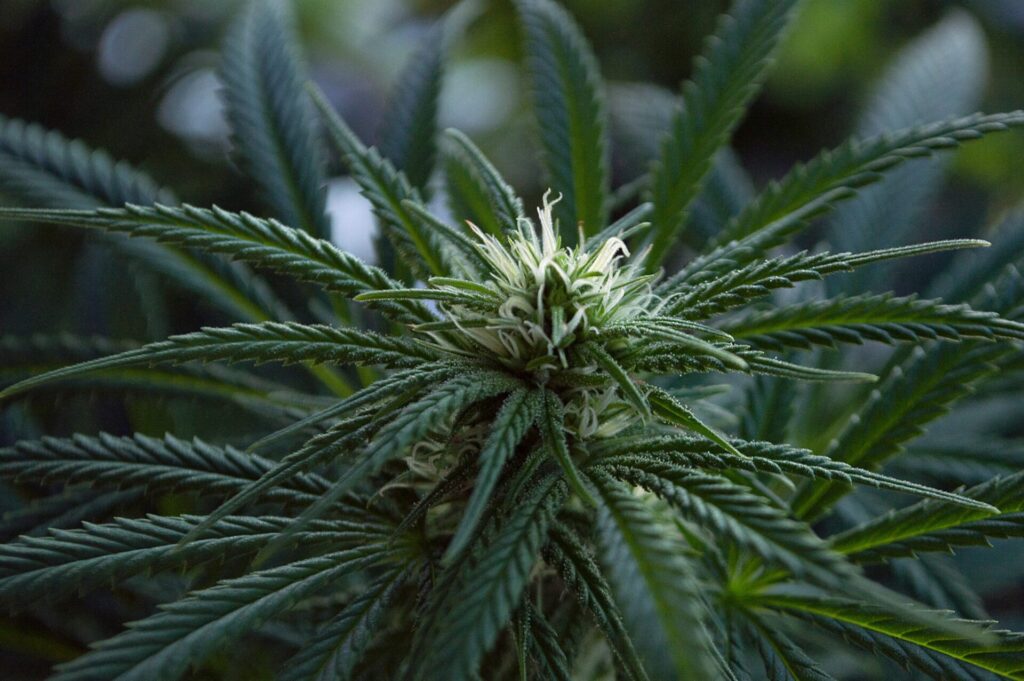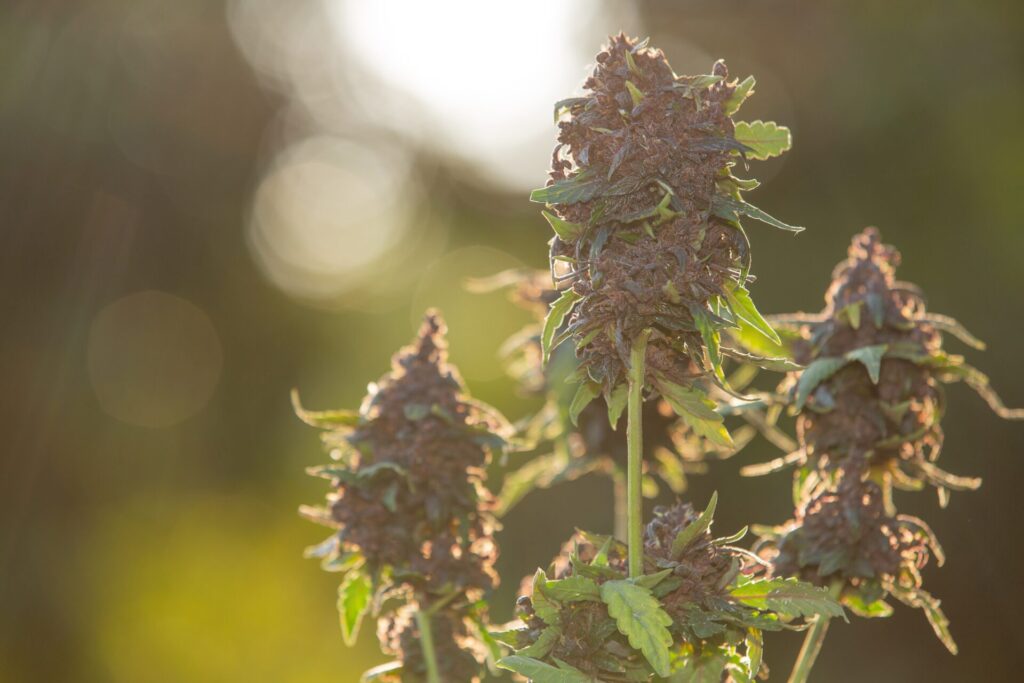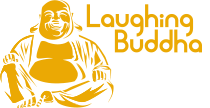The Ultimate Comparison: Hemp vs Marijuana

Both hemp and marijuana (weed) come from the same cannabis sativa family, and yes, they even look very similar. But there are quite a few differences in the way they are cultivated, used, and regulated by the law.
Cannabis is a broad term used to define three types of cannabis plants: Cannabis sativa, Cannabis indica, and Cannabis ruderalis. You have probably heard of sativa and indica in the context of how they affect the body. Indica is more about deep body relaxation, while sativa tends to give you that energizing, heady buzz. Ruderalis is not as well-known because it has low THC, doesn’t give much of a high, and it’s not really used for either recreational or industrial purposes.
If you are trying to understand the distinction between hemp and marijuana more closely, or to be more precise, the difference between buying a bottle of CBD oil at your local health store and needing a medical card, continue reading.
What is Hemp?

Hemp has been used by human civilization for thousands of years because of its tear-resistant fibers. Clothing made from the cellulose of the hemp plants is nothing new, but since the early 20th century, the hemp industry has also figured out a chemical process to turn it into a biodegradable plastic to make automotive parts, packaging containers, disposable tableware, skateboards, surfboards, children’s toys, and much more.
As per US law, hemp is the Cannabis sativa plant that contains 0.3% tetrahydrocannabinol (THC) or less. If a cannabis plant has more than 0.3% THC, it is classified as marijuana, which is federally illegal.
The 2018 Farm Bill made hemp legal at the federal level by removing it from the list of Schedule I controlled substances. Farmers are now allowed to grow hemp – or referred to as “industrial hemp” – and companies can produce all kinds of hemp-based products, such as CBD oils.
Some Common Myths
That said, there are still quite a few misconceptions floating around about the “hemp flower” or the bud or flower of the hemp plant. Flower is where naturally occurring CBD (cannabidiol), terpenes, and many other cannabinoids are most concentrated, so they are commonly used for smoking, vaping, or extracting CBD oil.
Some of these myths include:
- Smoking or consuming hemp flower will get them baked like marijuana.
- Hemp flower is just low-quality marijuana or a weak strain.
- The flower and marijuana are essentially the same plant or have same chemical structure.
- Since the flower doesn’t contain much THC, it has no real medical benefits.
None of this is true. Flower contains 0.3% THC or less, which is far too low to cause any intoxicating effects or get you buzzing, but it still does affect the body’s endocannabinoid system subtly due to the CBD and other cannabinoids: de-stressing, pain relief, reduced anxiety, and better sleep. it is bred for high CBD content and low THC.
The fact that hemp flower looks a lot like marijuana buds doesn’t fool you. You can legally buy and sell hemp flower – just like the rest of the hemp plant – on a federal level and in most states as long as the product is compliant with the 0.3% THC limit.
What is Marijuana?
Marijuana, on the other hand, has always been more controversial. It is the dried flowers, leaves, stems, and seeds of the Cannabis sativa or Cannabis indica plant, known for that euphoric, mind-altering effect thanks to a very high THC content.
Pot, ganja, Mary Jane, whatever you call it, marijuana is grown for one purpose only: to produce changes that affect your mental state, mood, or physical sensations. For many, this means recreational enjoyment, but it also includes using it for medicinal relief or therapeutic purposes. You can find several prescription medications approved by the FDA that are derived from marijuana to treat seizures, nausea, vomiting, loss of appetite, and neuropathic pain.
History of Marijuana
The earliest documented use of cannabis dates back to ancient China around 5,000 years ago to treat conditions like, gout, rheumatism, pain, inflammation, asthma, and depression. Over time, it spread to India, where it was also used in religious ceremonies. Eventually, marijuana made its way to Europe, but it was mainly used for hemp.
It arrived in the Americas in the early 1900s through Mexican immigrants and quickly gained popularity for recreational use. But then in 1937, the Marihuana Tax Act was passed to criminalize the plant across the country due to safety concerns. For decades, marijuana was associated with the underground, counterculture movements, and harsh drug laws. By the 1970s, under President Nixon, it became a Schedule I drug under the Controlled Substances Act. That placed it alongside heroin and LSD, despite growing evidence that it wasn’t nearly as dangerous.
Things have changed drastically since then. After California decriminalized it (for medical use) in 1996, and for recreation since late 2016, over 26 states have followed suit since then. Unfortunately, there is still a federal ban, i.e., marijuana is illegal on a national level.
The good news is, in states where it is legal, you can walk into a dispensary or gas stations, and buy weed just like you would alcohol. Edibles, concentrates, flower, and tinctures are all on the shelves.
21 Major Differences Between Hemp and Marijuana
| Hemp | Marijuana | |
|---|---|---|
| Species | Cannabis sativa only. | Can be Cannabis sativa, Cannabis indica, or hybrids of both. |
| THC Content | Contains 0.3% or less THC. | Contains 5% to 30% THC (some strains can contain even higher). |
| CBD Content | High CBD (cannabidiol), non-psychoactive. | Higher THC and comparatively lower CBD. |
| Psychoactive Properties | No high due to low THC (but drug tests can still detect it) | Produces a psychotropic high. |
| Legality | Federally legal under the 2018 Farm Bill. | Federally illegal, but legal in many states for both health-related and enjoyment purposes. |
| Usage | Used in industries: fiber, paper, textiles, construction materials, and bioplastics. | Only for consumption. |
| Appearance | Tall and thin plants grow up to 20 feet. | Shorter and bushier plants with dense foliage and flowers. |
| Legal THC Limit | Must contain 0.3% THC or less to be legally classified as hemp. | THC content is greater than 0.3%, which makes it illegal federally. |
| Common Consumables | CBD oil, hemp seeds, hemp protein powder, hemp seed oil (for cooking), hemp milk, hemp gummies, hemp tea, hemp-infused pain relief creams and balms. | Dried flower/buds (for smoking and vaping), edibles (gummies, chocolates, brownies, beverages), tinctures, THC oil, pre-rolls, concentrates (wax, shatter, live resin), THC gummies. |
| Plant Size | Hemp plants are larger, with more stalk and less flower. | Marijuana plants are smaller with more buds (flower). |
| Grow Cycle | 120 days or more to mature. | 60-90 days to mature (depends on the strain). |
| Seed Usage | Seeds are used for food, oil, and protein supplements. | Only used for growing plants. |
| Flower Usage | Hemp flowers are used to produce CBD products. | Marijuana flowers are the primary source of psychoactive THC. |
| Scent | Earthy, grassy scent due to chemical structures containing low terpene content. | Pungent, skunky, and often sweet or spicy scent due to high concentrations of terpenes. |
| Medical Uses | Anxiety reliefPain managementInflammation reductionSleep aidSeizure control (e.g., Epidiolex for epilepsy)Skin condition treatment (e.g., eczema, psoriasis)Neuroprotection (potential for Parkinson’s, Alzheimer’s) | Chronic pain reliefNausea control (especially in chemotherapy patients)Appetite stimulation (e.g., for HIV/AIDS or cancer)Muscle spasm relief (e.g., multiple sclerosis)PTSD symptom reliefGlaucoma treatment (reduces intraocular pressure)Anxiety and depression management |
| Part of Plant Used | The entire plant: stalk, seeds, leaves, and flowers. | Mostly the buds (flowers), sometimes the leaves. |
| State Laws | Legal in all states with varying restrictions. | Legal in 24 states for recreation; in 38 states for medical benefits. |
| Delta-8 THC Content | Naturally contains very low levels of Delta-8 THC. Most D8 THC is synthesized from hemp-derived CBD to comply with the 0.3% THC limit. | Marijuana naturally contains higher levels of Delta-8 THC than hemp, but it is still much lower than Delta-9 THC. |
| Delta-8 THC Legality | D8 cannabis products from hemp are legal under the 2018 Farm Bill. But some states have started banning or restricting it. | D8 derived from marijuana is illegal under federal law. It is regulated similarly to D9 THC in most states. |
| Availability of Delta-8 Products | D8 THC products made from hemp-derived CBD are easily available in many convenience stores and online. | Delta-8 THC products are harder to find from marijuana sources, as they are regulated like Delta-9 THC. |
| Legality in Online Sales | Hemp-derived Delta-8 THC is legal to buy and sell online, but check your local laws before purchasing (some states have banned it). | Marijuana-derived Delta-8 THC cannot be legally sold online unless you live in a state where marijuana is legal and online sales are allowed. |
Feeling Confused? Start with Delta 8 THC Online
If you have just started looking into hemp, CBD, THC, and this whole world of cannabinoids, it can be a lot to process. You are probably only looking to alleviate chronic pain, fall asleep easier, or add a boost of creativity and motivation to a project you are working on.
In that case, if you’re curious about trying something beyond CBD but don’t want to experience the intensity of Delta-9 THC found in marijuana, try naturally-hemp Delta-8 THC products from Laughing Buddha. Our products are intentionally designed for people who want to try something in-between CBD and marijuana.
We recommend starting with our delicious, fruit-flavored D8 gummies to ease you into a light euphoria. You will still be able to function like usual and enjoy your day without feeling too out of it. If vaping is more your thing, try our disposable pens and vape cartridges in a variety of flavors and strain options. What are you waiting for?
All products for sale on this website contain a value of less than 0.3% DELTA-9 THC.
FDA Disclosure: This product is not for use by or sale to persons under the age of 21, depending on the laws of your governing state or territory. This product should be used only as directed on the label. It should not be used if you are pregnant or nursing. Do not operate a vehicle or heavy machinery after using these products. Consult with a physician before use, especially if you have a medical condition or use prescription medications. A doctor’s advice should be sought before using any of these products. All trademarks and copyrights are property of their respective owners and are not affiliated with nor do they endorse this product. These statements have not been evaluated by the FDA. These products are not intended to diagnose, treat, cure or prevent any disease. By using this site you agree to follow the Privacy Policy and all Terms & Conditions printed on this site, void where prohibited by law. Further, the purchaser of these products bears all risk and assumes all liability associated with the purchase, use, and possession of these products.
This website is not offering medical advice. By using this website, you agree to our Privacy Policy and all Terms & Conditions published on this website.
Void where prohibited. All trademarks and copyrights are protected by law.
Please do not copy or republish any content on this website or likeness thereof without our written consent.
Be In The Know
Be the first to learn about new Laughing Buddha flavors and Delta-8 products.

